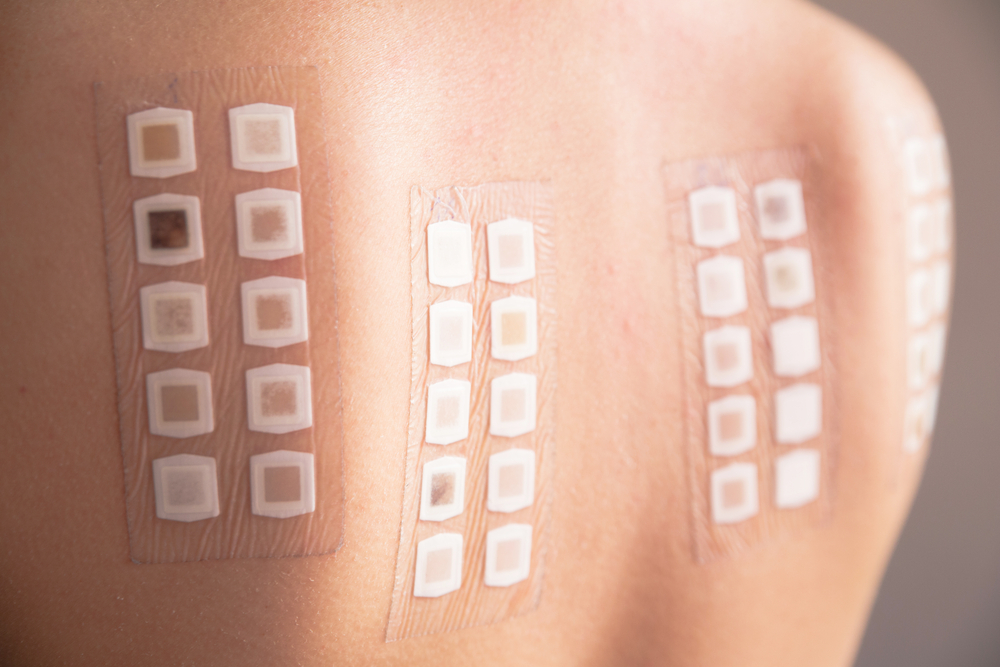- Mondor’s disease is a temporary condition where a vein within the chest or abdominal wall gets inflamed.
- It’s visible below, on or above the breast, and varies in length and intensity.
- Women at highest risk include those who have undergone breast augmentation or have breast cancer.
- In most cases, Mondor’s disease is very painful.
Mondor’s disease — also known as Mondor’s cord — is a rare condition that occurs when veins within the tissue of the breast, pectoral muscle or abdomen become severely inflamed.
Skin around the inflamed veins retracts and tightens, causing indented or protruding squiggly line to appear across part of the chest or abdomen.
What are the symptoms of Mondor’s disease?
While men can develop Mondor’s disease within the veins of their penis, it is three times more common in women.
“Mondor’s cord is an inflammatory response that may develop two weeks or so after breast augmentation surgery,” explains board-certified plastic surgeon Dr. Adam L. Basner from Baltimore, MD.
“Pain or discomfort from the cord can develop suddenly, but the sensation tends to be superficial. It is not to be confused with capsular contracture, which is the formation of internal scar tissue — in most cases, Mondor’s cords will resolve on their own within a few weeks.”
Most women describe Mondor’s cord as quite painful. A healthcare professional assessing the potential for this condition will also look for this hallmark symptom. Using the muscles in the affected area — when doing abdominal exercises or even just lifting your arm — can intensify the pain.
To the touch, the affected area feels like a firm and thin cord just beneath the most outer layer of your flesh.
How is Mondor’s cord diagnosed?
Mondor’s disease can be an “idiopathic” condition, which means there is no clear cause, or “iatrogenic,” which means it’s the result of a prior procedure or treatment. It can also be a manifestation of underlying pathology such as breast cancer.
When it appears in women who have recently undergone breast augmentation surgery, the diagnosis is simple and quite obvious. When it develops in women who have not had a breast augmentation, it should be treated with far more concern.
Given that this condition is usually harmless, it’s important for physicians to avoid unnecessary “investigations,” like a biopsy on the tissue of the affected area — unless given a clear reason to do so. Excessive testing can easily lead to significant anxiety for the patient and create a great deal of needless stress.
When a Mondor’s cord appears in a patient who has not undergone surgery or a treatment that could easily be pinpointed as the cause of the condition, a proper diagnosis should be reached by ruling out other causes.
Mondor’s cord is actually quite rare, and often misdiagnosed by physicians who don’t specialize in breast augmentation or breast cancer, where it’s most commonly seen. The inflamed area can be examined more thoroughly with an ultrasound. At this point, ruling out breast cancer through a mammogram and thorough exam of the affected tissue is crucial.
“Mondor’s cord is a fairly uncommon complication of breast augmentation,” Dr. Basner confirms. “In fact, very little clinical data is available on the condition because of both its limited presentation and lack of seriousness compared to more common and significant complications like capsular contracture. I would guess it occurs in 5 to 10 % of people. It’s a minor thing, and more likely with an IMF (inframammary) incision.”
A case in point
Elizabeth Moquin noticed a firm cord on her left breast and was very concerned. “The strange thing was, this was about a year before I had gotten breast implants, so there was no real explanation for it.”
Moquin says her primary care doctor had no idea what it was, but was also concerned. “I was so nervous,” says Moquin. “I thought it was cancer. My husband was freaking out, too,” she recalls. Unfortunately, even a visit to the oncologist did not yield any answers.
Breast cancer was eventually ruled out via further scans of the area, but Moquin was still left without a diagnosis or explanation.
After her husband Googled the visible description of her condition (a squiggly line on her breast), she hit the nail on the head and took her theory to her doctor. Moquin was able to determine that she most likely stressed the veins in her chest during an intense Bikram yoga class. She’s also an avid weightlifter, which would add to the stress and potential over-exertion of that part of the body.
What the main cause of Mondor’s disease?
The cause of a Mondor’s cord, in simplest terms, is a trauma of some kind to the tissue, veins and muscle of the affected area. It most commonly develops within the first few weeks after breast augmentation and generally resolves itself within a few weeks to a few months’ time.
However, every case of Mondor’s disease should be treated with concern because in some cases it can be the direct result of developing breast cancer.
While there are still many unanswered questions about Mondor’s disease, researchers have found that the condition typically develops as a result of direct trauma — like the surgical process of a breast augmentation — along with pressure on a vein and stretching of that vein.
Treating Mondor’s cord
For the most benign cases of Mondor’s disease, an anti-inflammatory, non-steroidal drug is the first step in simply reducing the pain in the affected area. This will ease the patient’s discomfort until the vein resolves itself.
While the primary treatment is simply time, using a combination of heating pads and non-steroidal anti-inflammatory medications (oral or topical) can help relieve the pain. Antibiotics are unnecessary unless there is an obvious infection.
In high-risk patients, especially those with existing blood flow concerns, an oral anticoagulant (blood thinner) can be a vital part of treatment. The two most common anticoagulants include heparin and warfarin. For low-risk patients, applying heating pads to the affected area is usually adequate to ensure healthy blood-flow.
Fortunately, once resolved, it’s very unlikely to develop again.
“Mondor’s typically doesn’t recur,” explains Dr. Basner. “The longer it’s been since breast surgery, the less likely it is for patients to experience inflammation that may result in the formation of cords.”
For patients suffering from Mondor’s cord directly related to developing breast cancer, the obvious priority is treating the cancer, not the cord specifically. These patients should work directly with an oncologist to decide on a treatment plan of action.
» For more information on Mondor’s disease, use Zwivel’s online directory to locate board-certified plastic surgeons in your area.









